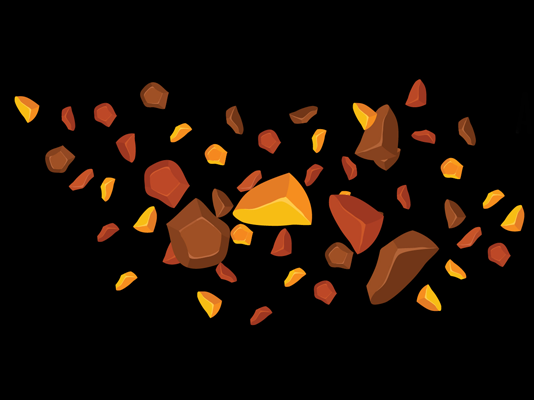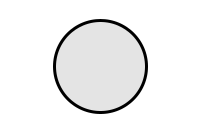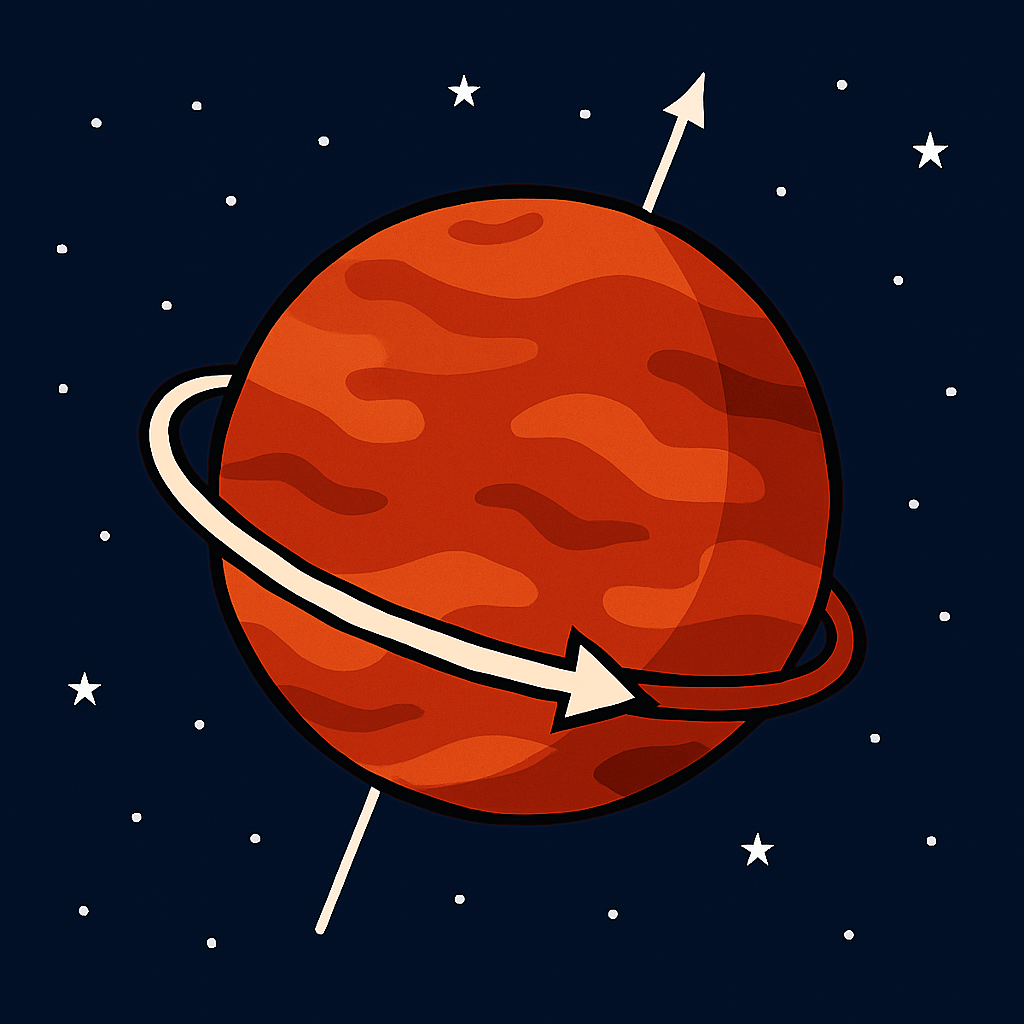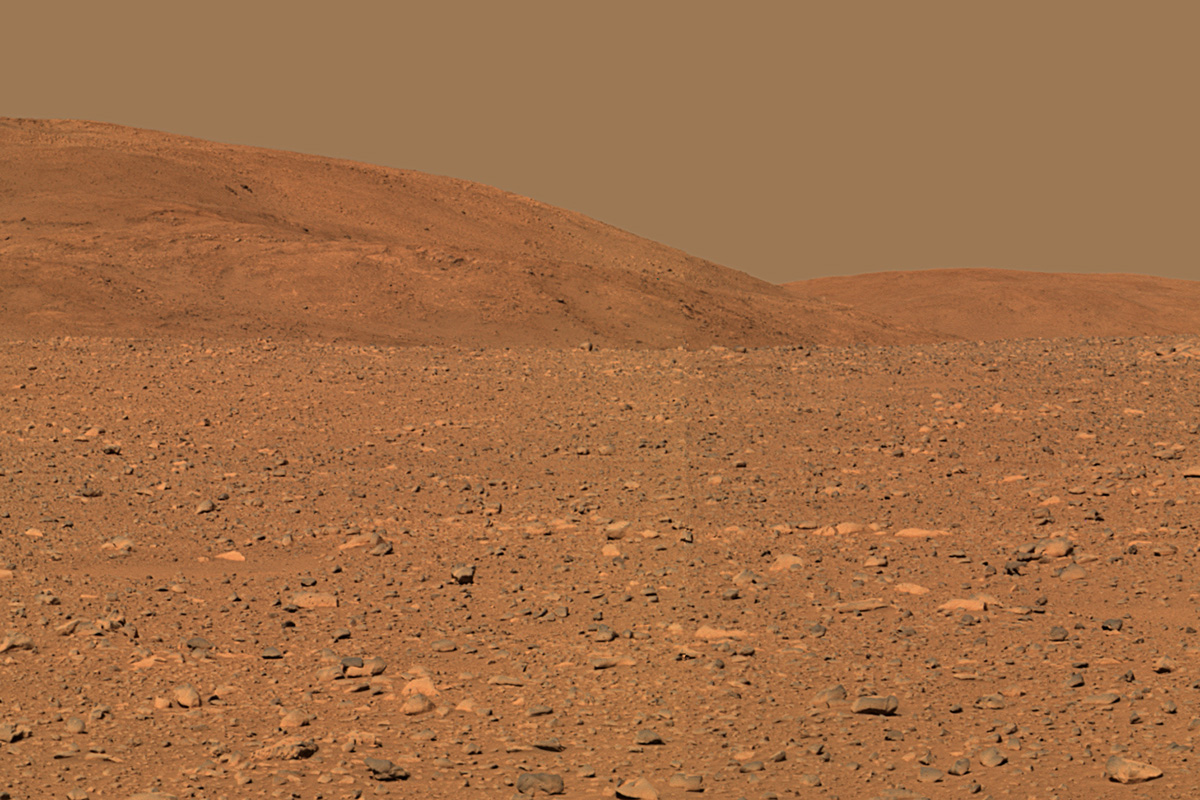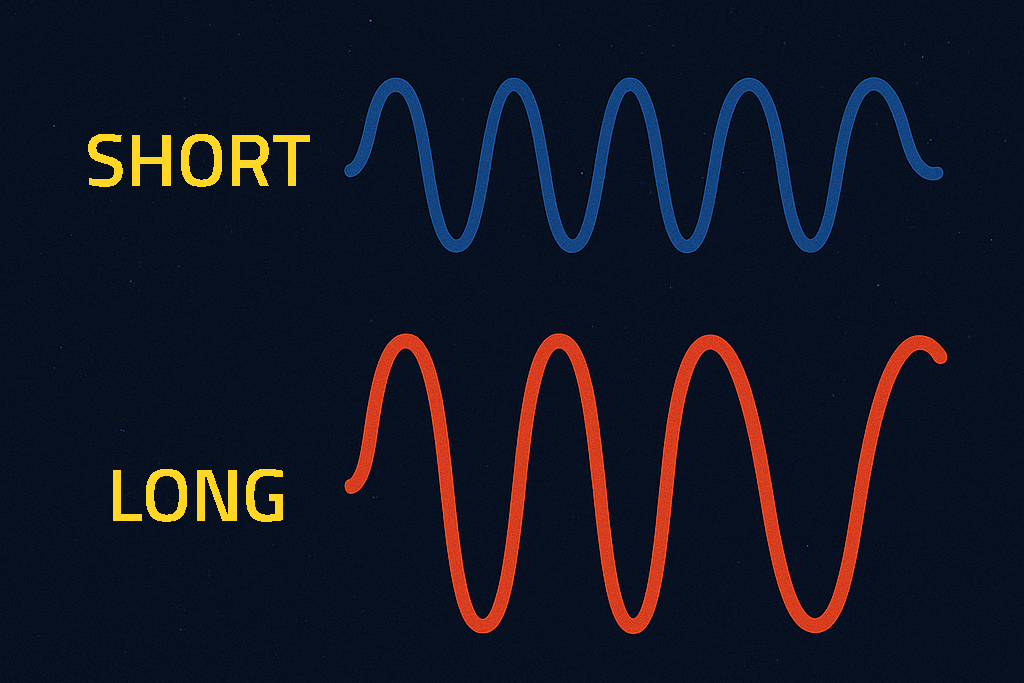Sunset on Mars
Good evening Earthings! Bob here, live from the surface of planet Mars, with my trusty companion Bobsdog. We're here to watch the sun go down, and talk about why sunsets on Mars are blue and not red like they are on Earth. So pull up a deckchair and join us!
Like Earth, Mars spins on its axis. As it rotates, the Sun appears to rise in the east, travel across the sky, and set in the west. On Mars, a day, or "sol" as the locals like to call it, is 24 hours and 37 minutes long, just a little longer than an Earth day.
The principle is the same across the Solar System: if a planet turns, it gets a sunrise and a sunset. If it doesn't... well, it's probably broken, and in for some very long mornings.
Butterscotch Days and Blue Evenings
Mars is known as the Red Planet for good reason. It’s red. Well, more of a rusty orange-pink. The colour comes from the fact that the planet has quite literally rusted. Dust from its iron-rich rocks and soil is blown high into the thin atmosphere, where it lingers and tints the sky. When sunlight passes through this dusty air, it gives Mars its distinctive butterscotch tone during the day.
In the evenings, things change. As the Sun sinks toward the horizon, a blue haze gathers around it - the complete reverse of Earth’s pattern. On Earth, skies are blue by day and sunsets glow orange. On Mars, skies are orange by day and sunsets glow blue.
And by the way, the Sun looks smaller here too. From Mars it’s only about two-thirds the size you’re used to seeing from Earth, thanks to the extra 80 million kilometres of space between the two planets.
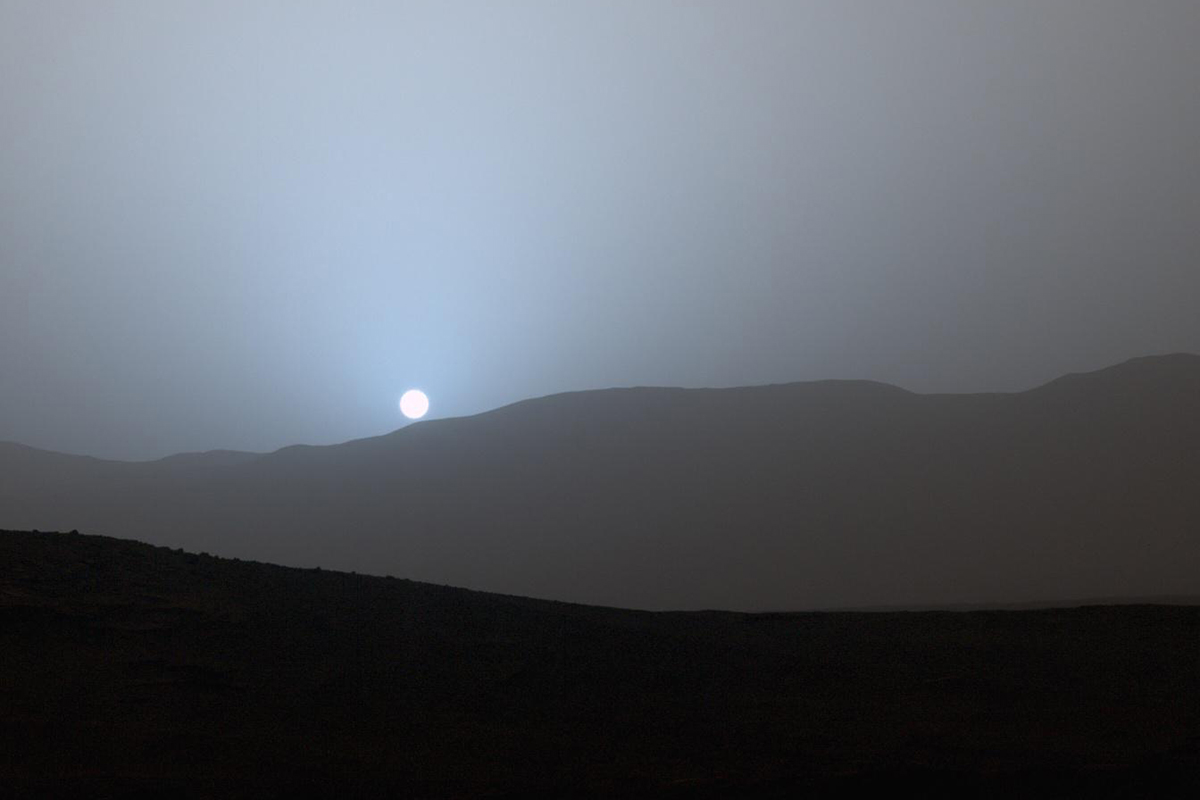
All planets with an atmosphere have a sky. The colour of that sky depends on what’s floating in the atmosphere and how dense it is. Without an atmosphere, the Sun would just be a brilliant white disc against the blackness of space, as it is on the Moon or Mercury.
On planets with an atmosphere, sunlight interacts with the particles in the air. When light hits molecules or dust grains, it bounces off and scatters in different directions.
On Earth, the molecules in the atmosphere scatter blue light more than any other colour, giving the planet its blue daytime skies. On Mars, the fine iron-rich dust scatters red and yellow light instead, tinting the daytime sky a warm butterscotch.
Scattering the Spectrum
Sunlight might look plain white, but it’s actually a mixture of all the colours in the visible spectrum, the same colours you see in a rainbow. Each colour travels in waves, and the length of those waves determines how they behave. Blue light has a short wavelength, while the red light has a long one.
When sunlight meets a planet’s atmosphere, those light waves interact with whatever particles are floating there. The size of those particles decides how the light is scattered.
- Rayleigh scattering happens when the particles are much smaller than the wavelength of light, like the nitrogen and oxygen molecules in Earth’s atmosphere. Rayleigh scattering is far more effective at spreading short wavelengths (blue and violet) than long ones (red). Technically, violet is scattered even more than blue, but there’s less of it in sunlight and your eyes aren’t very sensitive to it, so blue wins out and gives Earth its daytime skies. At sunset, sunlight passes through more atmosphere, the blue is scattered away before it reaches you, and the longer red and orange wavelengths dominate.
- Mie scattering happens when the particles are similar in size to the wavelength of light, like the fine, iron-rich dust in Mars’ atmosphere. Mie scattering tends to send red and yellow light off in all directions, while blue light is scattered forward, more directly toward the Sun’s position. That’s why, at sunset on Mars, you see a pale blue halo around the Sun while the rest of the sky keeps its dusty tone.
- Earth: Blue day, red sunset.
- Mars: Butterscotch day, blue sunset.
- Mars’ day length: 24 hours, 37 minutes.
- Atmosphere: Thin, about 1% of Earth’s density.
- Sky colour effect: Caused by particle size and scattering type.
- Watching a Martian sunset without a helmet: not advised (eyeballs freeze).
- The view: Priceless.




